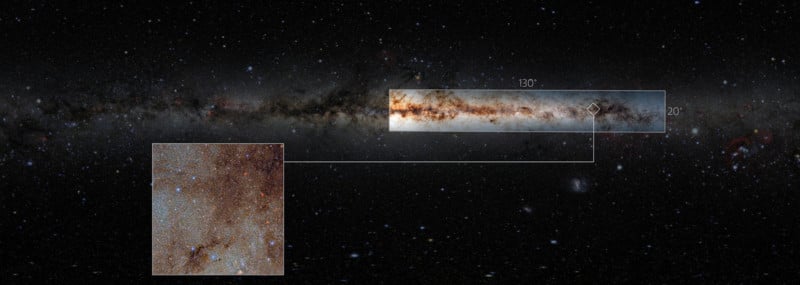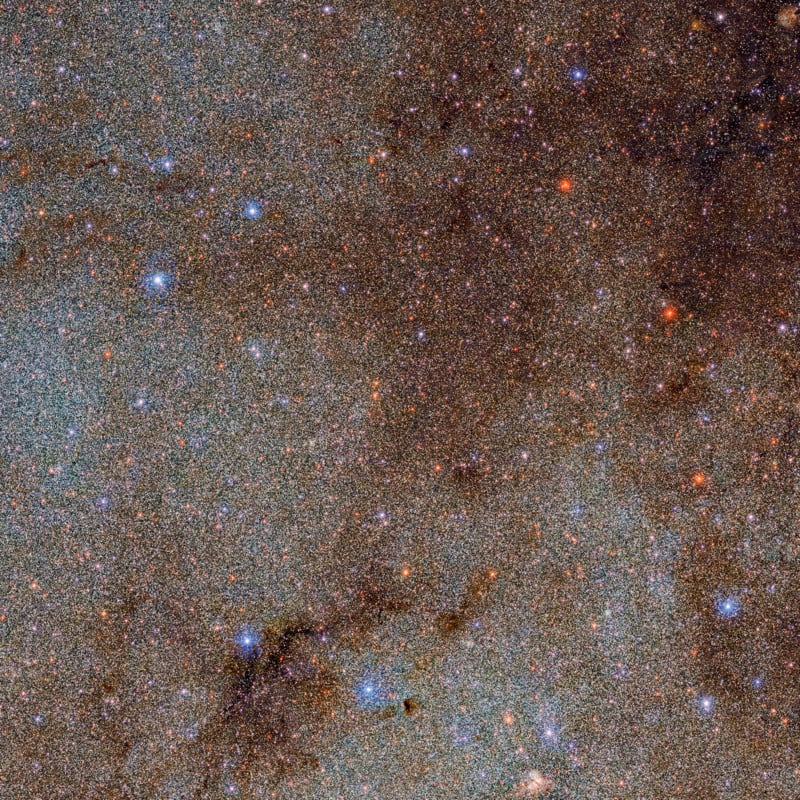Enormous Panorama of the Milky Way Reveals Billions of Celestial Objects
A new panoramic image captured by the Dark Energy Camera Plane Survey (DECaPS2) has revealed a staggering 3.32 billion celestial objects, which is arguably the largest such catalog released so far.
The data for this massive survey was taken with the Dark Energy Camera, built by the US Department of Energy, at the NSF’s Cerro Tololo Inter-American Observatory (CTIO) in Chile, a Program of NOIRLab. The camera has been previously used to examine the “galactic bulge” at the center of the Milky Way. NOIRLab, formally named the National Optical-Infrared Astronomy Research Laboratory, is the United States’ national center for ground-based, nighttime optical astronomy.
The final image, compressed below for the purposes of showing online, is built from 34 billion detections in 21,400 exposures, totaling 260 hours of open shutter time. In short, it’s a truly gargantuan photo.

CTIO is a group of international astronomical telescopes that sit at an altitude of 7,200 feet (2,200 meters) which gives astronomers a view of the southern celestial hemisphere.
“When combined with images from Pan-STARRS 1, DECaPS2 completes a 360-degree panoramic view of the Milky Way’s disk and additionally reaches much fainter stars,” Edward Schlafly, a researcher at the AURA-managed Space Telescope Science Institute and a co-author of the paper describing DECaPS2 published in the Astrophysical Journal Supplement, says. “With this new survey, we can map the three-dimensional structure of the Milky Way’s stars and dust in unprecedented detail.”
DECaPS2 is a survey of the Milky Way that has been captured in both optical and near-infrared wavelengths and its first set of images were released in 2017. Combined with this new addition of 3.32 billion celestial objects, astronomers say the survey covers 6.5% of the night sky and spams 130 degrees in length. That might not seem like a lot, but NOIRLab says that this is equal to 13,000 times the angular area of the full moon.
The full panoramic photo is absolutely massive, which can be best exemplified by looking at just how large one small section of it is. The below image puts the new survey into perspective and shows a low-resolution image of the DECaPS2 data overlaid on an image showing the full sky. The callout box is a full-resolution view of a small portion of the DECaPS2 data.

That small portion, below, is absolutely packed with stars and dust clouds. It is described as a “mere pinprick” of the full survey:

With this perspective, it’s clear how much data scientists now have access to.
“By observing at near-infrared wavelengths, [scientists] were able to peer past much of the light-absorbing dust. The researchers also used an innovative data-processing approach, which allowed them to better predict the background behind each star,” NOIRLab explains. “This helped to mitigate the effects of nebulae and crowded star fields on such large astronomical images, ensuring that the final catalog of processed data is more accurate.”
This gargantuan survey of the galactic plane of the Milky Way is available to the entire scientific community and the hope is that once the data is analyzed, scientists will have a better understanding of the Milky Way.
“This is quite a technical feat. Imagine a group photo of over three billion people and every single individual is recognizable!” says Debra Fischer, division director of Astronomical Sciences at the National Science Foundation.
“Astronomers will be poring over this detailed portrait of more than three billion stars in the Milky Way for decades to come. This is a fantastic example of what partnerships across federal agencies can achieve.”
Image credits: DECaPS2/DOE/FNAL/DECam/CTIO/NOIRLab/NSF/AURA